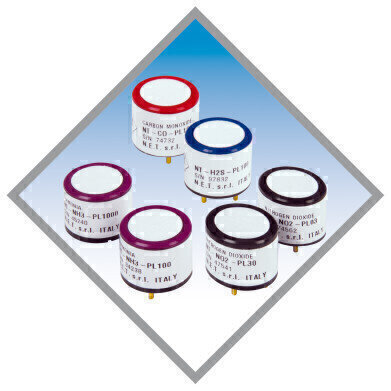Analytical Instrumentation
Electrochemical cells for harsh environment applications
Apr 05 2018
The European Standard EN 45544-2 (Workplace atmospheres. Electrical apparatus used for the direct detection and direct concentration measurement of toxic gases and vapours. Performance requirements for apparatus used for exposure measurement) specifies the performance requirements for electrical apparatus used for the direct detection and direct concentration measurement of toxic gases and vapours in workplace atmospheres, including sensors. This standard provides a consistent approach and framework for the assessment of performance criteria to manufacturers, test laboratories and users of apparatus.
But, the standard states, “It is the manufacturer’s primary responsibility to ensure that the apparatus meets the requirements laid down, including environmental influences which can be expected to affect performance”.
With this in mind, N.E.T. has designed its Premium Line: a range of electrochemical cells to exceed all the performance requirements of EN 45544-2 - including upper and lower limit of measurement, deviation of the measured values in clean air and in standard test gas, deviation of the measured values at all temperatures, pressures and at any humidity, time of response (t90, t50), time of recovery (t10, t50), over-range and stability.
The Premium Line is manufactured exclusively for N.E.T. in Japan and includes sensors for CO, NO, NO2, H2S, SO2, HCl, Cl2, Ethylene, Formaldehyde, Hydrogen Peroxide, NH3(available in 4 different ranges) and the new H2S-HT cell for high temperatures.
When designing the Premium Line, N.E.T. has tried to improve on the common downfalls of electrochemical technology.
Electrochemical sensors can be affected by other gases, resulting in a loss of sensitivity. A typical case is how the presence of Hydrogen Sulfide (H2S) can significantly affects the reading of Ammonia (NH3) sensors. In presence of H2S, the typical signal from electrochemical sensors on the market increase and follow concentration of H2S. At same time, N.E.T. sensors show a smooth negative response within a market-leading less than 10% of actual H2S concentration.
Another common downfall is how, depending on the type of sensor and the gas to be measured, the sensor is gradually consumed by the target gas. Not only this requires frequent calibration and bump-tests, but a baseline presence of gas on the environment can lead to quick depletion of the sensor itself. Our Premium Line sensors have an expected lifetime of over 2 years (3 years, in case of CO and NO2). And our NH3sensor again stands out for his resistance to a light presence of ammonia in the environment and his capability of recovering sensitivity after high exposures, dramatically reducing calibration and substitution frequency.
Finally, environmental factors, and temperature in particular, affect both sensitivity and baseline. Premium Line sensors maintain excellent performances throughout a very extended temperature range and our H2S-HT cell is unique on the market with an amazing -40°C +65°C.
If you want to test the Premium Line performances and dependability for yourself, just contact N.E.T. today for a sample cell at salesnet@nenvitech.com
Digital Edition
PIN 25.1 Feb/March
March 2024
In This Edition Safety - The technology behind the ION Science Tiger XT - Safety with ammonia and LOHCs as hydrogen carriers Analytical Instrumentation - Discussion on new tribology te...
View all digital editions
Events
Apr 24 2024 Mumbai, India
Apr 24 2024 Jakarta, Indonesia
Apr 28 2024 Montreal, Quebec, Canada
Apr 30 2024 Birmingham, UK
May 03 2024 Seoul, South Korea


















